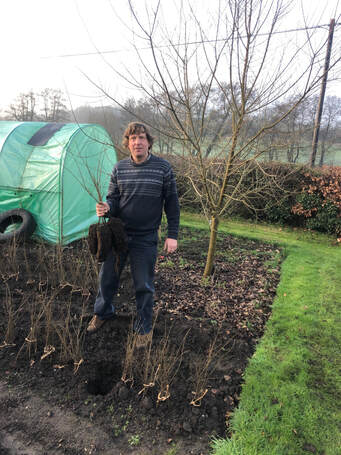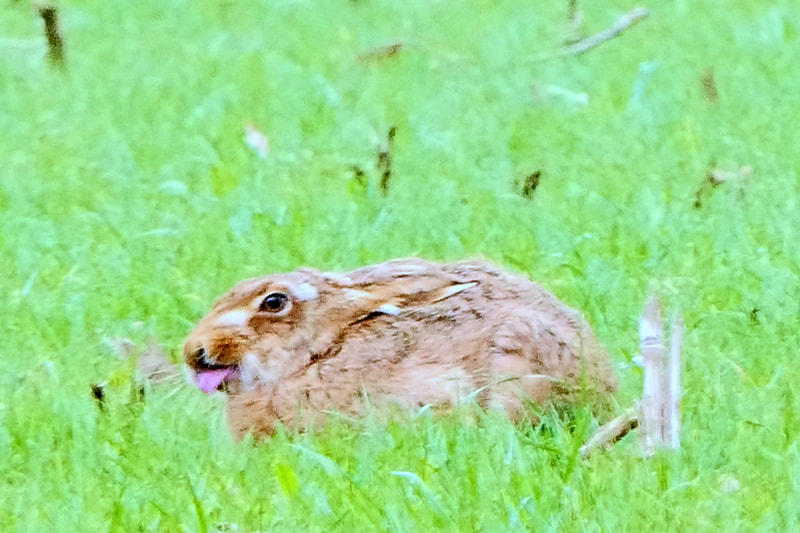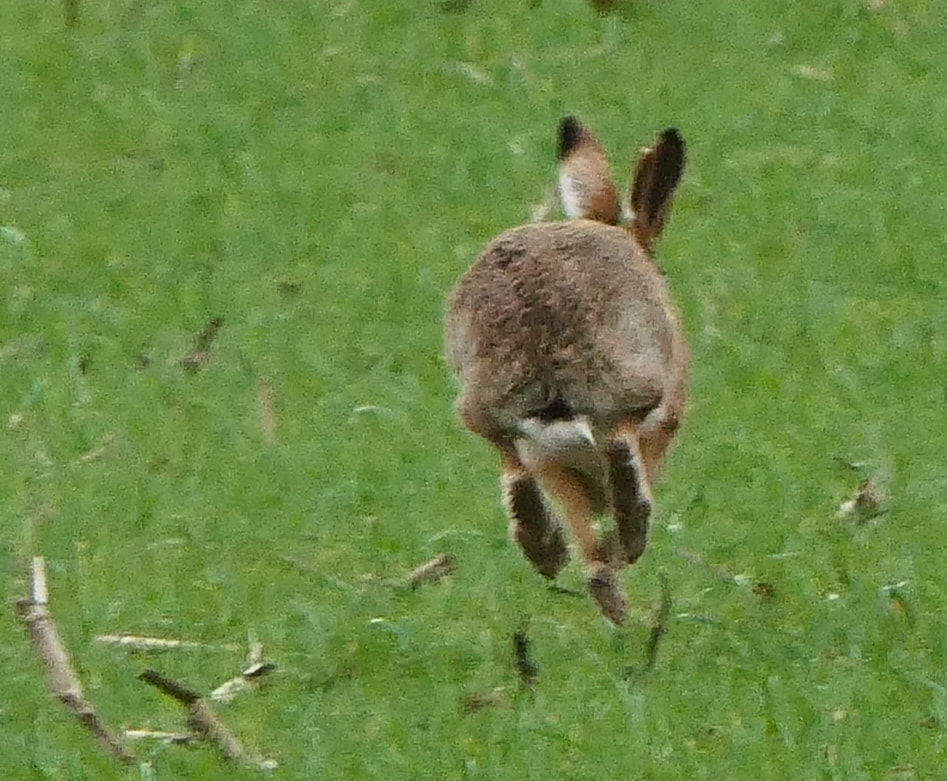|
Mark Elliott of the Devon Wildlife Trust gave a fascinating talk to the Society’s February meeting on the reintroduction of beavers into the UK, based on his experience as leader of the Trust’s project on the River Otter in south Devon.
As he explained, beavers are a species native to Britain that were hunted to extinction roughly 400 years ago. As they are no longer regarded as ‘ordinarily resident’ they can only be released into the countryside with a licence; but things are changing now, as a result of the success of the Devon trials. Last August DEFRA confirmed that the River Otters trial had been sufficiently successful for the beavers to stay indefinitely, and support will now be provided for similar managed projects elsewhere. This outcome could not have been foreseen at the start of the Devon programme back in 2015. Mark showed us how these semi-aquatic rodents had interacted with the environment on the Otter, showing how the population had grown and migrated along the river catchment over the period since then. From two founding family groups the number had grown to around 13 territories in 2019. At the outset Mark dispelled the popular misconception beavers eat fish; they are strict vegetarians. And he showed the results of work carried out by the Universities of Exeter and Southampton to measure the beaver’s impacts on fish and other wildlife. The increased variety of habitats that result from the beavers’ dams (that periodically get washed away and then rebuilt) have led to enhanced fish populations of all types and sizes, and the wetlands that result are ideal breeding and feeding grounds for frogs and for wildfowl. The water storage capacity of the river catchment has increased, and water quality downstream has improved, with lower levels of sediment, nitrogen and phosphorus downstream of the beavers than in the upstream input, and an increase in the concentration of dissolved carbon. He didn’t disguise occasional problems that have resulted from damage to crops of sweetcorn and flooding of adjacent grazing land, but showed how these can be managed effectively. Overall the experience in Devon is that the beavers are popular and, if the initial introduction is managed wisely, can exist alongside the human population to provide benefits to our environment. You can read more about the Devon beaver population and Mark Elliott’s ongoing work by visiting: www.devonwildlifetrust.org/what-we-do/our-projects/river-otter-beaver-trial Dick Budden Debbie and Andrew Carter had an enjoyable time watching hares in a field near Pyt House. Thanks to Andrew we can see how long a hare's tongue is! Such a well-caught pose.
Our 40th Annual General Meeting starts at 7:00pm in the Victoria Hall, Tisbury. All are welcome to attend.
The talk starts at 7:30pm. If you haven't already signed up to the talk and want to come, please let us know via the Contact form. We can also send out Zoom links for those who prefer to stay at home. Guests welcome for £2 per ticket. Our speaker, Mark Elliott heads the project being carried on by Devon Wildlife Trust on the River Otter that has led beaver conservation in the UK for more than ten years. He will be able to describe their work, what we have learned as a result about this amazing animal, how they can benefit us and the landscape around us, and how we can manage potential conflicts with land owners and residents. Photo credit: Eurasian beaver (Castor fiber). Per Harald Olsen, CC BY-SA 3.0 via Wikimedia Commons Dr Tristan Bantock is presenting a talk for the Wiltshire Wildlife Trust on Hemiptera (true bugs) for which he is a national expert.
Michael New, the Wiltshire Wildlife Trust's Ecological Officer, has previously been to a couple of Tristan’s presentations and he says that they really get you enthusiastic about this interesting group. Tristan also runs the recording scheme. The meeting is on March 22nd and starts at 7pm. Please can you let Michael know if you are interested in attending and he will send out Zoom meeting details for you. [email protected] Members of the Society have been busy on practical projects recently. Before Christmas, in the parish meadow (behind the Nadder Centre) we planted nearly 150 trees. A number of trees and shrubs were planted in 2013 in the sheltered, south-western, bottom corner of the field. These are established now and are beginning to knit together. The new planting will augment these. Species planted included oak, birch, hawthorn, willow, dogwood, buckthorn, hornbeam, beech and crab apple. This diversity of species aims to make it as valuable for wildlife as well as interesting to look at. Most of the trees were relatively small, bare-rooted plants; planted correctly, these have the best chance of rapid establishment. Each is supported with a bamboo cane and spiral guard for protection while a woodchip mulch around the base will help to suppress weeds and retain moisture. We look forward to them bursting into leaf in the spring.
We also took the opportunity to weed amongst the young hedge line between the community orchard and the skatepark, again applying mulch to help their establishment. An ongoing project is to lay the hedge which separates the parish meadow from orchard and skatepark. It will involve cutting away some of the existing growth to make the hedge line thicker and more vigorous in the long term. Laying prompts the existing shrubs in the hedge to send up new growth from the base while still growing from the remaining branches that have been laid. This prevents it getting gappy and top heavy and helps the hedge to develop the width which makes it most valuable to wildlife. In the New Year members were hard at work coppicing in Oysters Coppice Wiltshire Wildlife Trust reserve near Semley. The society will also continue to organise coppicing in the community field in years to come. When coppicing, all the small trees and bushes are cut down to the ground over a defined area. This lets sunlight in and results in a flush of flowering plants for a few years until the cut stumps have regrown and shade returns. Some of the cut material is woven into dead hedges to protect the cut stumps – or stools as they are known – and later more is placed over the stools to prevent deer browsing. Many woodlands in Britain used to be managed as coppices but as the markets for the products that they produced – e.g., hurdles, thatching spars, fence rails and posts – declined so did coppicing, to the detriment of many woods’ wildlife. by Andrew Graham  Congratulations to our chair, Peter Shallcross, Vice Chair of the Nadder Valley Farmer Group, on being short-listed for his disease-resistant elm project in the Conservation Project of the Year category of the 2022 Wiltshire Life Awards. With 6,000 elm trees delivered nationally, Peter’s work over the last five years has made a significant contribution to the re-establishment of elm trees in our landscape and the conservation of species which rely on elms to thrive. |
Photo: Avocets (Izzy Fry)
The headers display photos taken by our members. Do get in touch via the Contact Form if you'd like to submit a photo for selection.
Archives
May 2024
Categories
All
|





 RSS Feed
RSS Feed